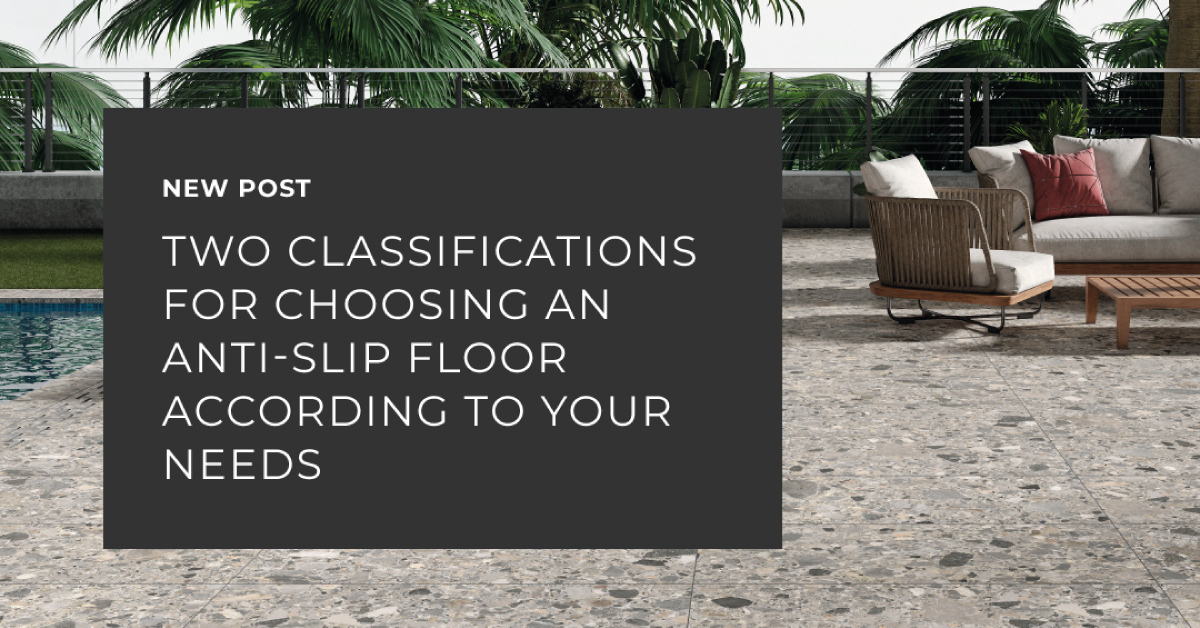Types of ceramic anti-slip floors
Non-slip ceramic tiles can have more or less anti-slip capacity depending on their classification.
The constant quest to create increasingly functional and aesthetic ceramic products has led to the development of such versatile floors as non-slip ones. Their popularity has only grown in recent years, whether for kitchens, bathrooms or swimming pools. When deciding on a tile collection, we usually consider the format, design or shape. But if there is one factor that is vital, it is the characteristics of the space in which we are going to install it. Does it get wet often, is it only sometimes wet, do we walk barefoot on it, indoors or outdoors?
Depending on how we answer these questions, we will need one type of floor or another. These types are defined according to different regulations, such as the Spanish one, which establishes 3 different stages according to the slope:
- C1, when there is a slope of less than 6%: these are the tiles that we would install in areas inside the home, where the non-slip floor provides extra safety on a daily basis.
- C2: this is the non-slip ceramic floor tile that is recommended for installation inside the home and in wet areas, such as bathrooms, kitchens or changing rooms. It can also be used in some outdoor areas.
- C3, for indoor areas with a slope of more than 7 or 8%: this is the ultimate anti-slip tile. It is suitable for all types of interiors and as the safest anti-slip tile for swimming pools.
This classification is usually accompanied in our country and internationally recognised, the German din 51130. The test carried out to classify the tiles is the Ramp Test: a person walks along the tiles with different liquids fixed to a ramp that is adjusted in each case, until he/she can no longer maintain balance. This is why the classification is accompanied by the letter R.
- R9, inclination from 6 to 9º: this is a low value that makes them suitable for most domestic areas.
- R10, from 10 to 19º: more versatile than the previous one. It can be used in bathrooms in the home as well as in other spaces such as the kitchen.
- R11 – R12, from 19 to 35º: very non-slip, both wet and dry. This makes it suitable for wet areas such as bathrooms or public areas such as communal showers or swimming pools. It can also be used without problems in corridors or porches.
- R13: with a test ramp inclination of more than 35º, it is the most extreme anti-slip range for areas with a high risk of slipping, such as swimming pools.
At STN we also have innovative finishes such as INOUT, which make continuity possible by allowing the same flooring to be used indoors and outdoors. The finish is applied to the surface of the tile as a thin, homogeneous layer of microscopic granules, resulting in a non-slip surface that is easy to clean.
With both classifications and depending on the space in which they are recommended for use, you can successfully choose the best ceramic tiles for your project.
If you liked our post on “Types of ceramic anti-slip floors” you can find more topics in our News section on the web by clicking here.

